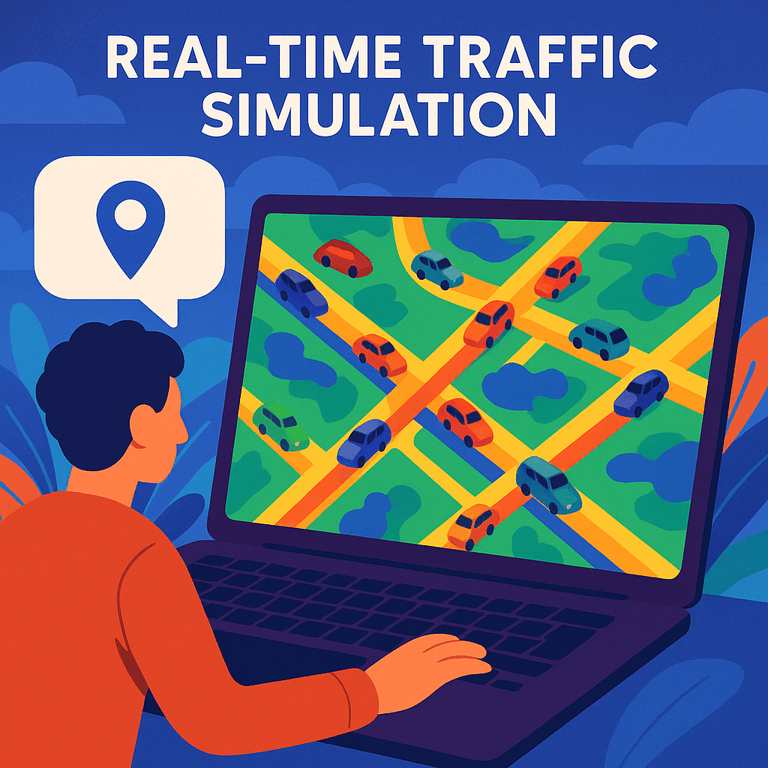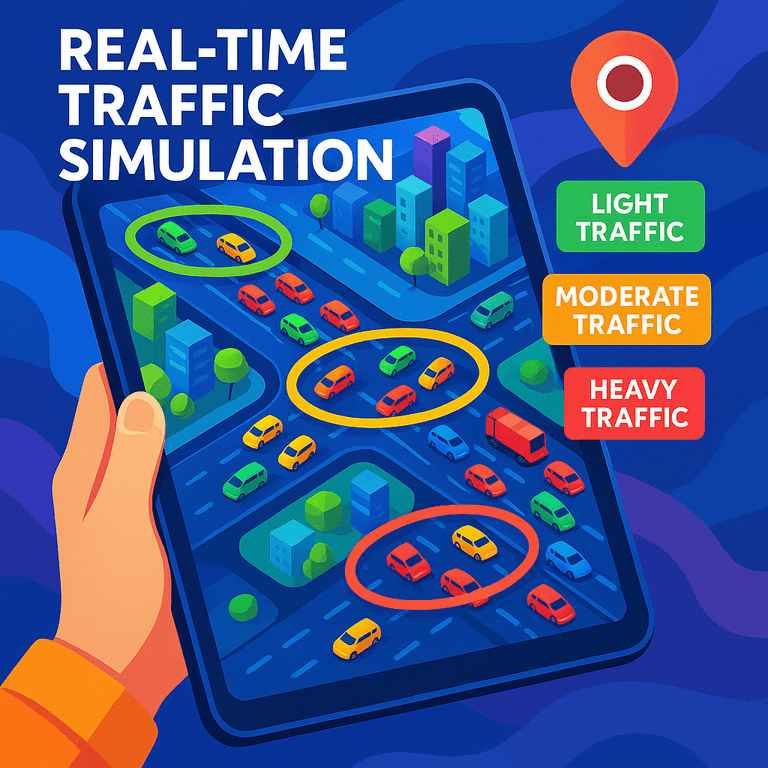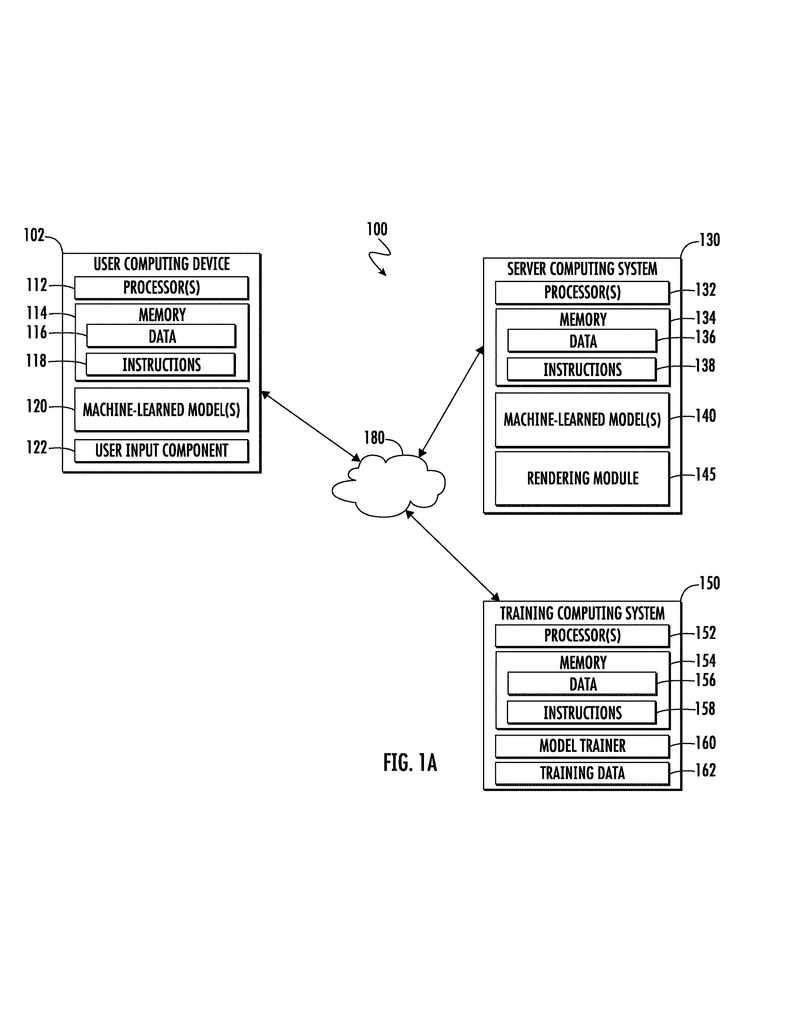Invented by El Sheikh; Omar Galal, Chen; Sitian
Traveling through a city can be tough, especially when you are stuck in traffic and you do not know what’s ahead. Let’s explore a new technology that brings traffic to life on your screen, helping you make better choices before you even leave your home. This blog will walk you through why this invention matters, how earlier solutions have worked, and how this new idea changes the way we see and interact with traffic data.
Background and Market Context
People have always wanted to know what the roads look like before they start their trip. For many years, travelers and drivers relied on radio updates or simple color-coded maps that showed where traffic was heavy or light. These methods gave just enough information to help avoid traffic jams, but they left out a lot of details. You might see a red line on your map, but what does that really mean? Is it a total standstill, or just a slower pace? It is hard to tell.
With more people moving to cities and more cars on the roads, traffic problems have only gotten worse. City planners, delivery companies, and regular drivers all need better ways to understand and plan for traffic. That is why navigation systems and map apps have become so popular. They give turn-by-turn directions, estimated arrival times, and traffic warnings.
But, these apps often show traffic in simple ways. Usually, a road is colored red, yellow, or green depending on how slow or fast the traffic is moving. Sometimes, you see small icons for accidents or construction. This approach is quick and easy, but it does not help you really picture what’s happening on the streets. You can’t see if the traffic is caused by a big event, bad weather, or just regular rush hour. And for people who want to plan better, like delivery drivers or emergency services, these simple maps do not give enough detail.
As technology has improved, companies have started adding more features to their apps. Some apps let you zoom in on the map, see 3D buildings, or even watch simple animations of cars. But these features are often basic, slow to load, or use up a lot of your phone’s battery and data. People want more—real views, real movement, and real context about why traffic is the way it is.
This is where the new invention comes in. It offers detailed, realistic animations of traffic on real roads, based on up-to-the-minute information about traffic and weather. Instead of just seeing colors or numbers, you can watch cars, buses, and even people move along the streets, just like they would in real life. These animations help you get a better sense of how busy a route really is, and what you might face if you choose to drive there. This goes beyond maps and simple icons—it is about bringing the real world to your screen, so you can make smarter choices about how and when to travel.
For businesses, this technology can help with planning deliveries, adjusting schedules, or even re-routing vehicles to save time and fuel. For city planners, it can show how changes in roads or new buildings might affect traffic. For everyday people, it can make trips less stressful and help avoid surprises. This is not just about seeing traffic—it’s about understanding it, predicting it, and making life easier for everyone who moves through our busy cities.
Scientific Rationale and Prior Art
To truly appreciate this invention, let’s look at how earlier technology has tried to solve the traffic problem and what scientific ideas are behind the new approach.
Older map apps and navigation tools use something called “traffic overlays.” These are the colored lines you see on roads, showing how fast or slow traffic is moving. They work by gathering data from many sources—like road sensors, cameras, and sometimes the smartphones of people driving on the road. If lots of phones are moving slowly, the app guesses that traffic is heavy. If they are moving quickly, the road is probably clear.
These systems use basic math and computer science to process huge amounts of data and turn it into something simple, like a color or number. Sometimes, they use machine learning to predict traffic, looking at past patterns—like if every Monday at 8am a certain highway is always slow, the app will expect that to happen again.
Some newer apps have started to add things like incident alerts (accidents, road work, or events), but these are usually reported by users or taken from public databases. In terms of visuals, most apps stick to simple graphics. Some advanced apps try to show little moving cars or offer a 3D “flyover” of the area, but these are often pre-recorded videos or basic animations, not real-time, interactive scenes.
One of the big problems with past solutions is that they either use too much of your device’s power (making your phone hot or draining the battery), or they need a lot of data to send videos or detailed graphics over the internet. This is especially tough for people with slow connections or older phones.
Another challenge is that most systems use a “one size fits all” approach. They might send the same video or animation to every user, even if someone’s device could handle more detail, or if someone only needs a simple view. This wastes resources and doesn’t always give the best experience.
The new invention builds on these earlier ideas but takes a big step forward. It uses a system of “pre-generated” animations—these are short scenes showing traffic on real roads, matched to the real world by computer models. The system chooses which animation to send based on the latest traffic and weather data. If it is raining and traffic is slow on Main Street, the user will see an animated view of cars moving slowly through rain on Main Street. If another road is clear and sunny, that animation will look different. This is much smarter than just coloring roads or sending the same animation to everyone.
The invention also makes use of clever computer techniques to save bandwidth and power. Instead of always sending full videos, it can send smaller pieces of information—like key “frames” or instructions for how to draw the scene. If your device can handle it, it can put the scene together itself, making everything smooth and fast. If your device is older or slower, the system can do more of the work on its end and send you a ready-to-watch animation.
In short, the new method is smarter, faster, and more flexible. It brings together data from many sources, uses modern computer graphics, and adapts itself to each user’s needs. It solves problems of the past by being more efficient, detailed, and user-friendly.
Invention Description and Key Innovations
Let’s break down how this invention works and what makes it special, in the simplest way possible.
When you use a map app that has this new technology, here’s what happens: You make a request—maybe by zooming in on a city block, searching for a route, or asking to see what traffic looks like right now. Your device sends this request to a smart computer system.
The computer system quickly gathers all the latest information about the roads in your area. This includes:
- How many cars are on each street (from traffic data)
- How fast they are moving (from GPS and sensors)
- What the weather is like (from weather services)
- Any special events or road closures (from city data or news)
Based on this information, the system chooses from a big library of “pre-made” traffic animations. These animations are like short movies showing cars, buses, and people moving through real streets in different ways. There are animations for heavy traffic, light traffic, rain, snow, and even special events like parades or concerts.
For example, if there is heavy rain and traffic is slow on Main Street, the system sends an animation that shows many cars moving slowly through rain on that street. If another street is clear and sunny, the animation will show only a few cars moving quickly in bright weather.
Sometimes, the system sends the full animation to your device, so you can just watch it. Other times, it sends only the instructions or key pieces, and your device puts everything together. This saves space, makes things load faster, and uses less battery.
One neat feature is the use of “visual modifiers.” These are simple changes to the look of the cars or roads in the animation, to help you quickly see what’s happening. For example, cars in heavy traffic might be colored red, while cars in light traffic might be blue or green. In bad weather, you might see rain falling or snow on the ground.
The system is also smart about what it sends you. If your phone or computer is powerful, it can handle more detailed graphics and smoother animations. If your device is older, the system will send simpler versions that still show the traffic, but won’t slow down your device.
Another big plus is that the system can add notes or icons to the animation. If a traffic jam is caused by a concert or a parade, you might see a small music note or a flag. If there is an accident, you might see a warning icon. This helps you understand not just where traffic is, but why it’s there.
All of these features make the new technology very flexible. It can be used in many ways:
- For regular drivers, to plan smarter routes and avoid surprises
- For delivery drivers, to choose the fastest ways and save fuel
- For city planners, to see how changes or events might affect traffic
- For people with disabilities, to find the safest and easiest ways to travel
- For anyone who wants to see not just a map, but a real view of what’s happening on the roads
The technology can also learn and improve over time. By watching how people use the animations, the system can figure out which features are most helpful, and adjust what it shows. It can also use new data sources as they become available, like better weather forecasts or more detailed traffic sensors.
In short, this invention makes traffic real. It uses the latest computer tools to turn boring maps into lively scenes, helping everyone make smarter choices about how and when to travel. It is fast, adaptable, and easy to use, whether you are on the latest smartphone or an older computer.
Conclusion
The way we look at traffic is changing fast. This new invention brings together real-time data, smart computer graphics, and flexible delivery to make traffic easy to see and understand. Instead of guessing what a red line on a map means, you can watch real cars move through real streets, in real weather, with all the context you need. This makes planning trips easier, helps businesses work better, and gives city planners new tools for keeping things moving smoothly.
With this technology, every trip can be less stressful and more predictable. Whether you drive every day or just need to get somewhere fast, seeing real traffic in action helps you make better decisions. As more apps and devices add these features, we can all look forward to smarter, safer, and faster travel.
Click here https://ppubs.uspto.gov/pubwebapp/ and search 20250216210.




